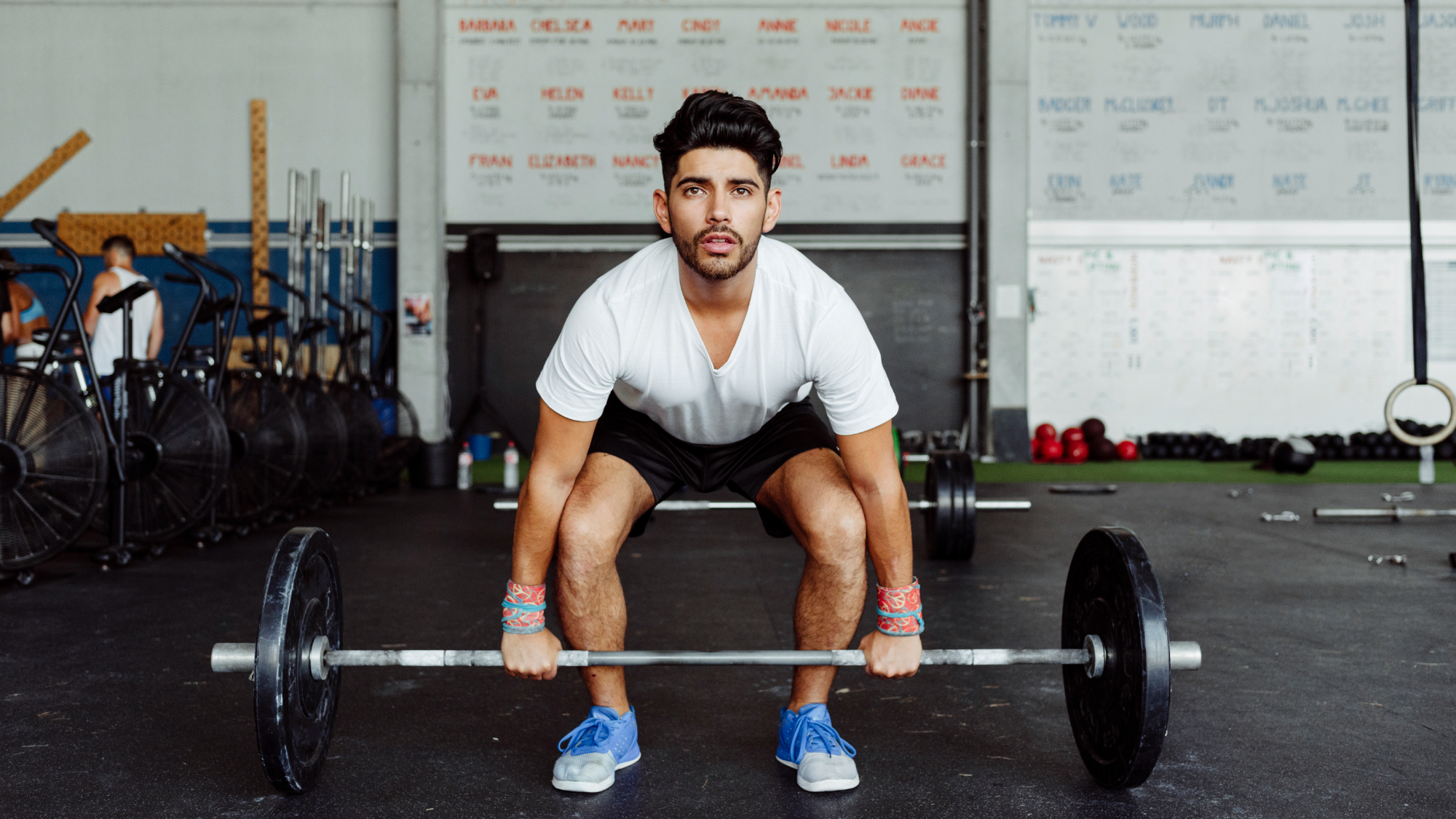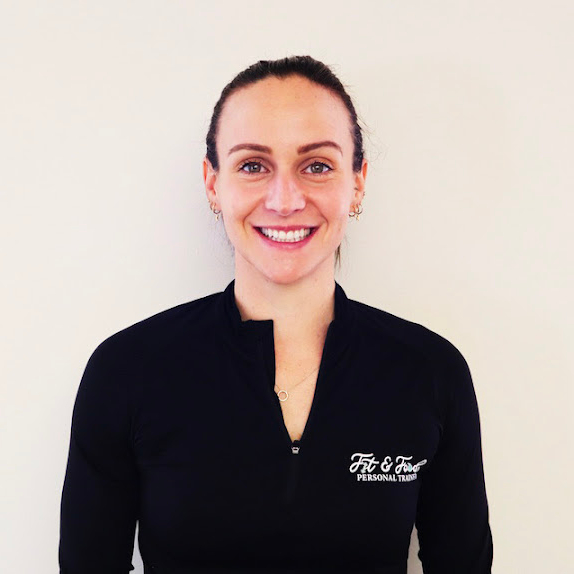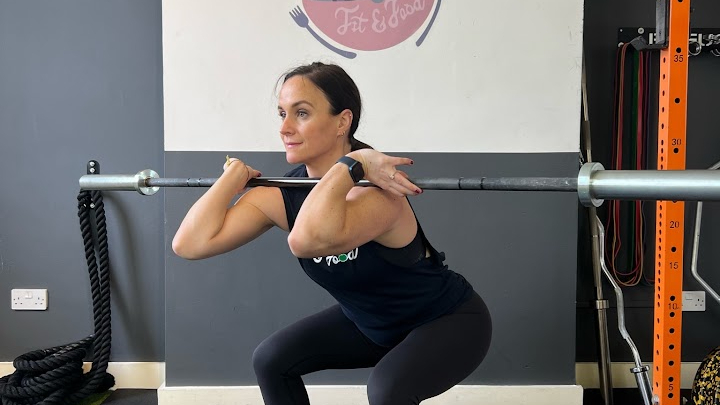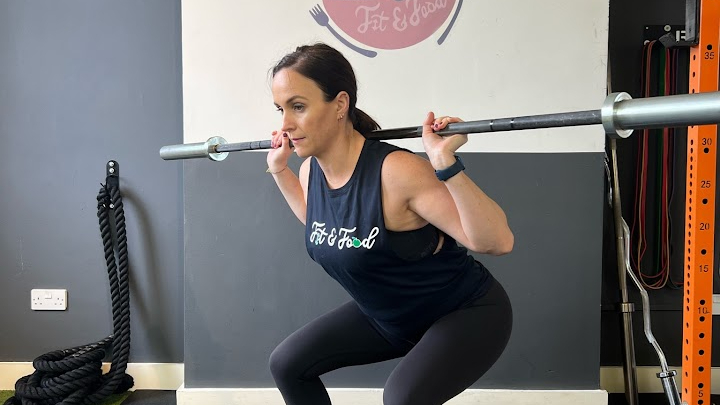Front squat vs back squat: which is best for beginners?
We asked a personal trainer to compare front squats vs back squats so you can choose the top move for your goals


If you're new to resistance training, you may have been comparing front squats vs back squats to develop strength. These two training techniques sound similar, but they work different muscles, so which should you choose for your workouts?
Both are variations on the classic bodyweight squat, with added resistance to increase the intensity. The squat's popularity is thanks to its ability to work several muscles simultaneously, and these two variations add more muscles into the mix for more efficient training.
If you want to strengthen your whole body with this multi-muscle compound exercise, you still need to decide whether to do a front squat or a back squat. To make things easier, we asked a personal trainer which variation is best for beginners and how to get started with each.

Laura Byrne is a personal trainer and the founder of the London-based fitness studio, Fit & Food. She is also a certified pre and postnatal coach and nutritional advisor. Laura believes the key to long-term results is focusing on realistic, achievable, and balanced goals.
What is a squat?
The squat is a fundamental movement pattern for humans—watch any toddler, and you'll see how natural this position is. As we go through life, we often get out of the habit and swap squatting for bending over.
Squatting in the gym is a great way to get familiar with this movement pattern again. Over time, you'll also notice improvements outside the gym, including better posture, improved core strength, higher muscle mass, and a lower risk of injuries.
But what exactly is a squat? Personal trainer Laura Byrne explains: "The squat is a fundamental lower body movement pattern in which you send your hips back and sit into an invisible chair."
It requires flexion at the hips, knees, and ankles and predominantly targets your lower body, including the glutes, quads, hamstrings, and calves." Plus, it can strengthen your core muscle and work your shoulders if you're doing a weighted squat.
Start your week with achievable workout ideas, health tips and wellbeing advice in your inbox.
You don't need any equipment for the standard squat, but for front and back squats, you'll need gym equipment like a barbell or a set of the best adjustable dumbbells if you're training at home, as these customizable weights combine several dumbbells into one for easy storage.
What is a front squat?
If you want to increase the intensity of the bodyweight squat, you can add weights into the mix. As you might expect, you'll hold the weight (a dumbbell or barbell) in front of you, close to your upper body.
"A front squat is a squat in which the position of the barbell or weight is placed on the person's front," says Byrne. So rather than placing your barbell across your shoulders, it's set in front of you, across your collarbone.
What muscles does a front squat work?
"With the load on the front, you have to stay upright to maintain balance. Therefore in a front squat, your quadriceps, glutes, hamstrings, abdominals (abs), spinal erectors (lower back), upper back, shoulders, and lats are all used," says Byrne.
How to do a front squat

You'll be holding the barbell in front of you for this move, which makes your center of gravity shift forwards, says Byrne. You'll hold the barbell using "your fingertips across your front deltoids, essentially sitting across your collarbone."
Moving your hips back and down as you lower into the squat is essential. "There is no need for a glute (bum) squeeze at the top of the movement—it is unnecessary, and the work is done at the bottom range of the movement," says Byrne.
And if you're a woman concerned about pelvic floor health, try out Byrne's top tip: "To help keep pressure off the pelvic floor, exhale as you stand up and don't brace (hold your breath)."
- Stand with your feet slightly wider than hip distance apart.
- Pick up the barbell from the handle's center with your hands close together.
- Lift to shoulder height, push your shoulders back, and allow the bar to rest gently on your shoulders with hands under your chin.
- Lower into a squat position with control, with your elbows bent and facing toward the ground.
- Pause for a few moments and the bottom of the squat before returning to standing. That's one repetition.
What is a back squat?
Instead of holding the weight on your front, you'll hold a barbell along the top of your back for the back squat. This is what most people imagine when they picture a weighted squat.
"With this exercise, you can recruit more overall muscle since you can carry more weight with the bar on your back than the front squat," says Byrne.
What muscles does a back squat work?
"Like the front squat, the back squat predominantly works your quadriceps, glutes, hamstrings, and abdominals. The back squat also requires a forward lean, which increases tension on some of the posterior chain muscles," says Byrne, making the back squat a great glute exercise.
How to do a back squat

As the name suggests, the barbell will rest on your back during a back squat. "The weight rests across the trapezius and rear deltoid muscles (upper back) on the back side of your body. Once the bar is in place, you send your hips back and sit back (into an invisible chair)," says Byrne.
She also has an important note to consider when adding back squats to your routine: "Make sure you learn how to bail out of heavier weights. You should practice this using light weights initially."
- Stand with your feet slightly wider than hip distance apart.
- Pick up the barbell with an overhand grip, pull your shoulders back, and let the weight rest across your upper back.
- Push your hips back and lower into a squat position.
- Hold at the bottom for a moment, then return to the starting position. That's one repetition.
Why do front squats instead of back squats?
So now you've got the lowdown on both varieties of squats—but which one should you do? According to Byrne, the answer depends on your goals, but there's no reason you can't incorporate both into your routine.
"Neither variation is more beneficial than the other; however, depending on your mobility, one might be more accessible. For example, if you have tight triceps, you may be unable to bring the elbows high enough for the front rack position," advises Byrne.
But there are plenty of benefits of squats, like making everyday tasks easier. "Most people squat throughout the day," says Byrne. Practicing the technique can "increase strength, burn calories, strengthen your joints, and increase bone density."
In the long run, this can help "prevent injury, boost your mobility, and improve your posture," explains Byrne. This is known as functional fitness, where you aim to strengthen your body for tasks you do throughout the day, like lifting, sitting, or picking up heavy items.
Is a front squat harder than a back squat?
"Not necessarily; however, you can lift more weight performing back squats due to the bar's position on the body. The front squat also has increased mobility demands in the ankle and the wrists and so may be more difficult for some individuals," says Byrne.
If you're not quite ready to incorporate weighted squats into your workouts, you can perfect your technique and work several muscles simultaneously by practicing deep squats for a month. This bodyweight move can be intense, even without weights.
Alternatively, doing 100 weighted squats every day for a few weeks is an intense challenge if you want to focus on developing lower body strength, but you must warm up properly before and keep a keen eye on your form so that you do each with perfect technique.
Abby Driver is a freelance health writer and qualified fitness instructor based in Cornwall. Away from her desk she enjoys exploring the Cornish coast path, sea swimming and experimenting with new recipes.
